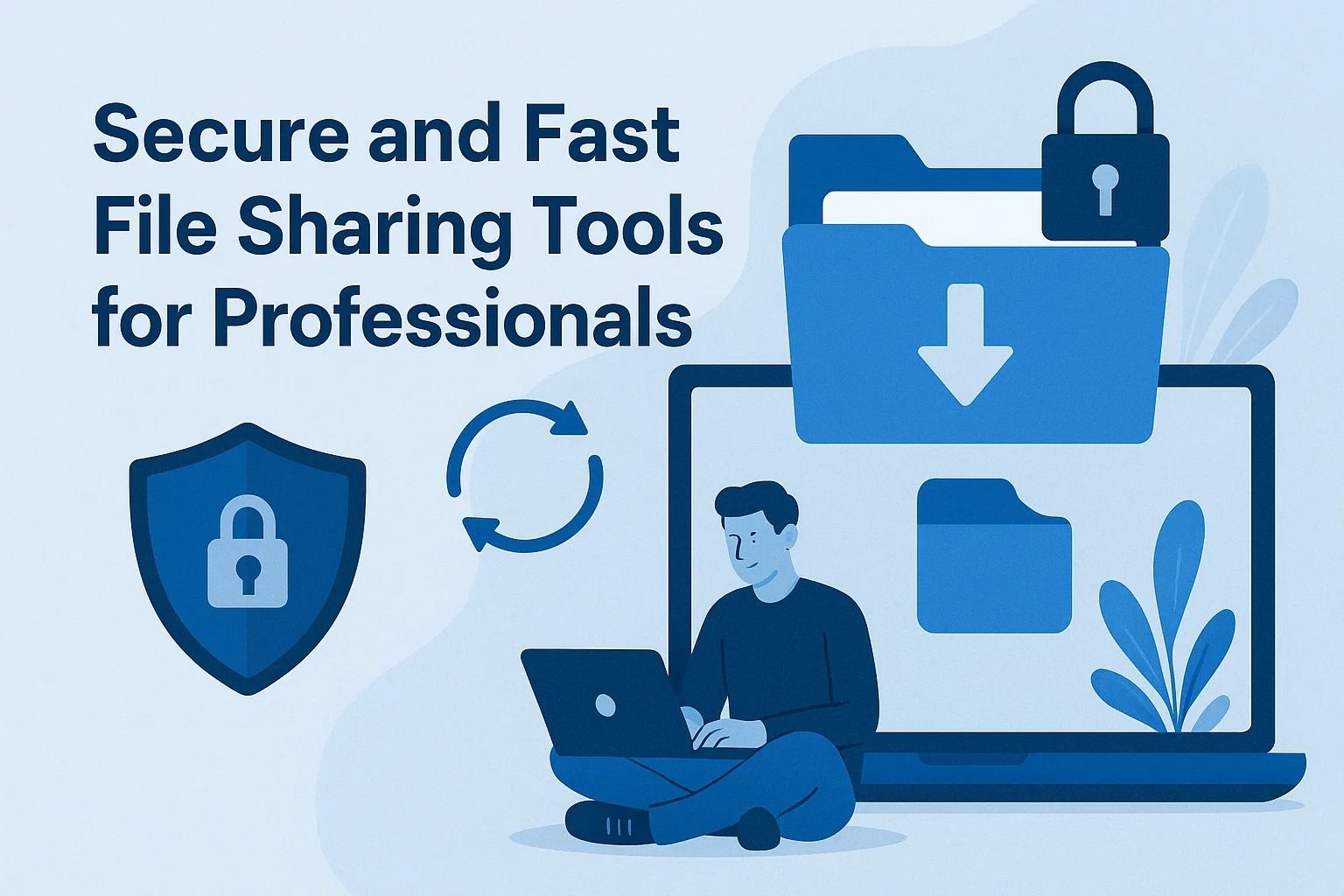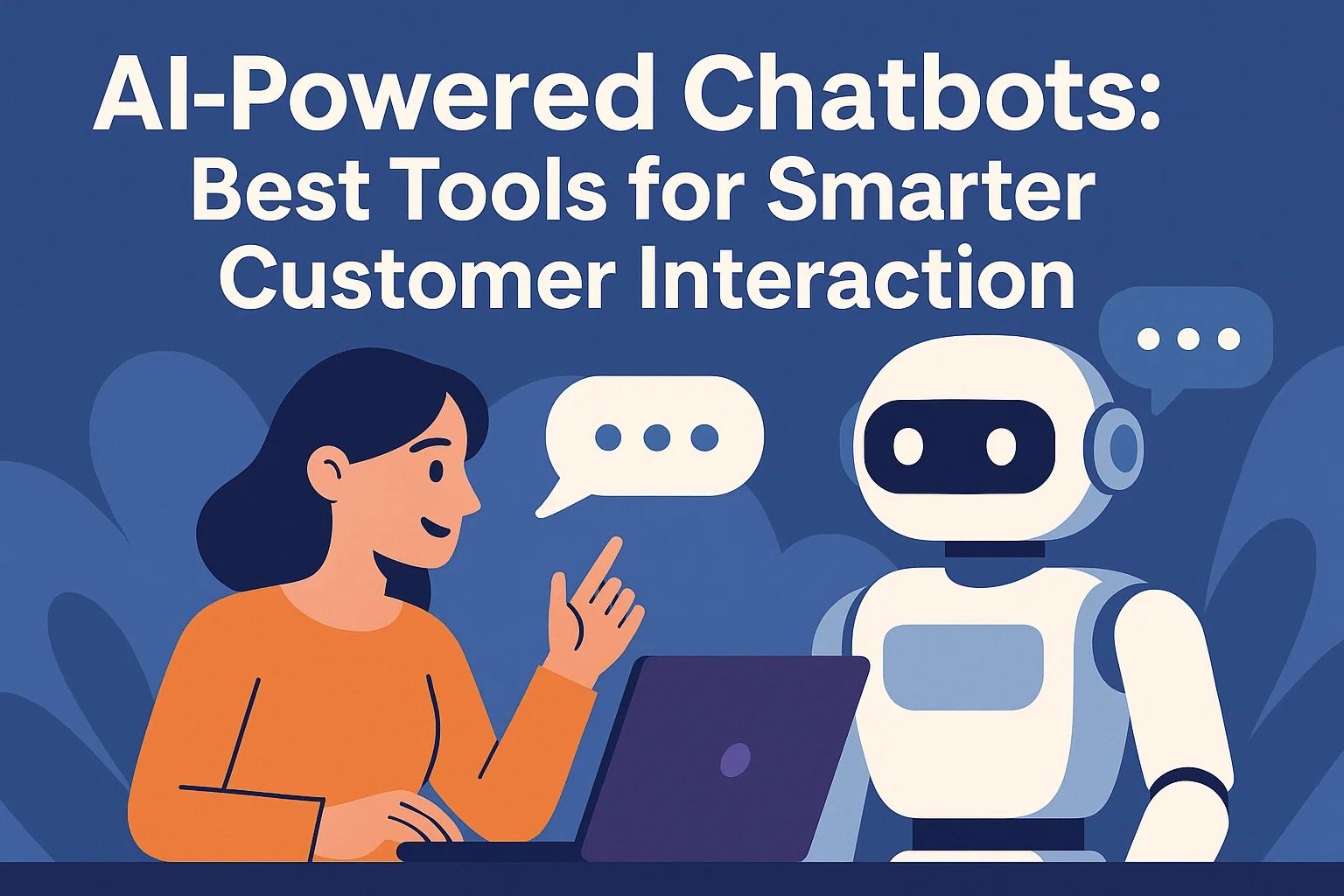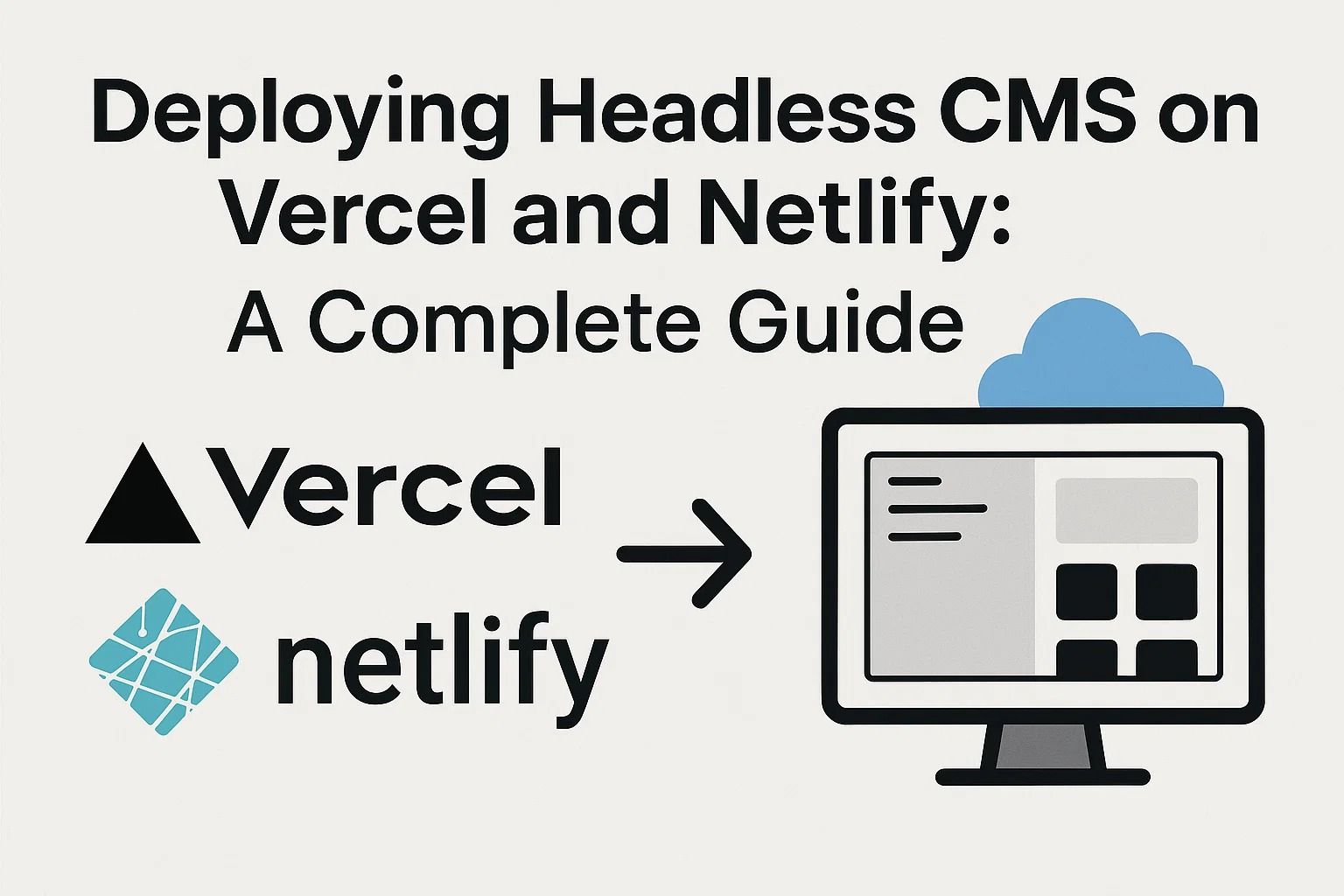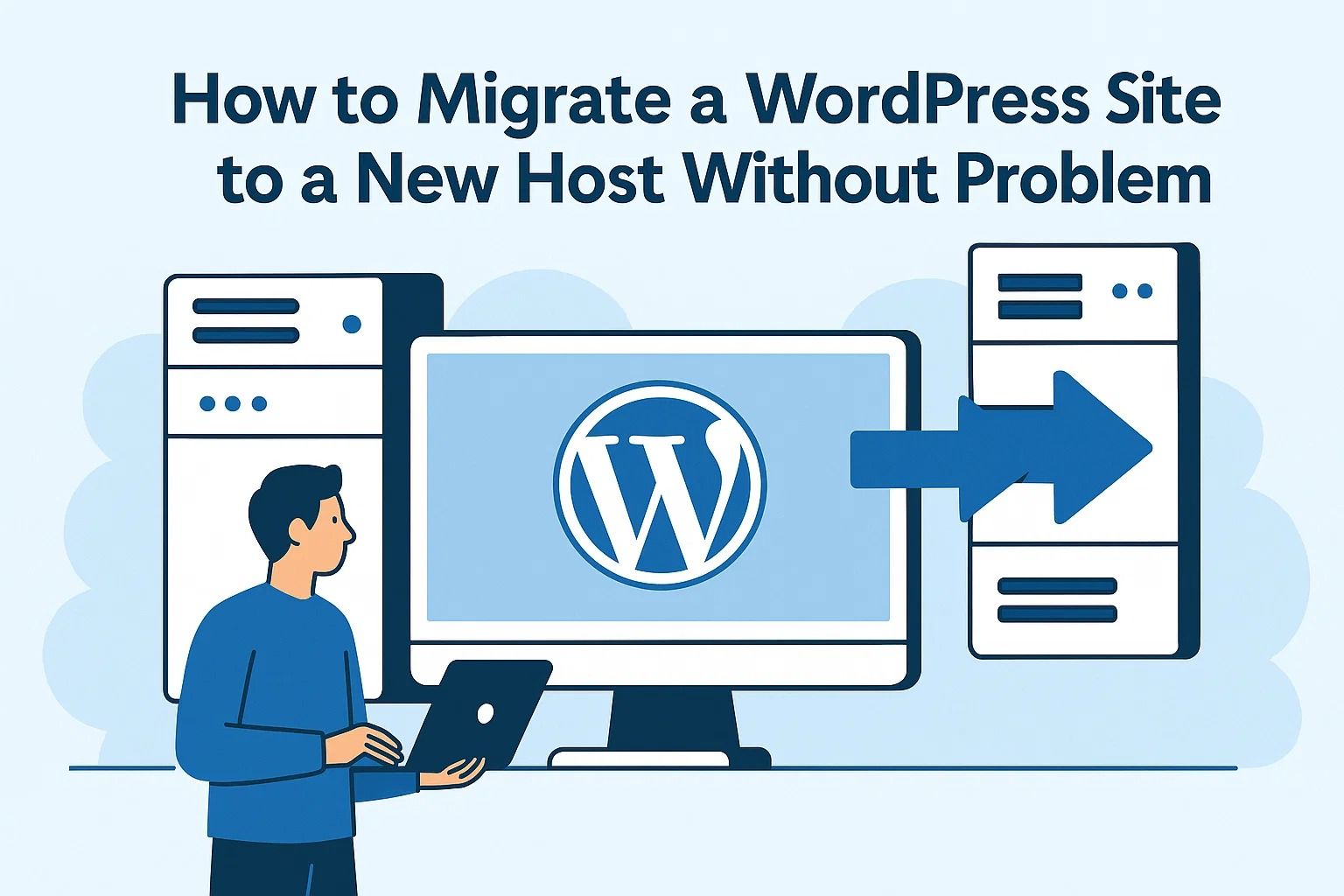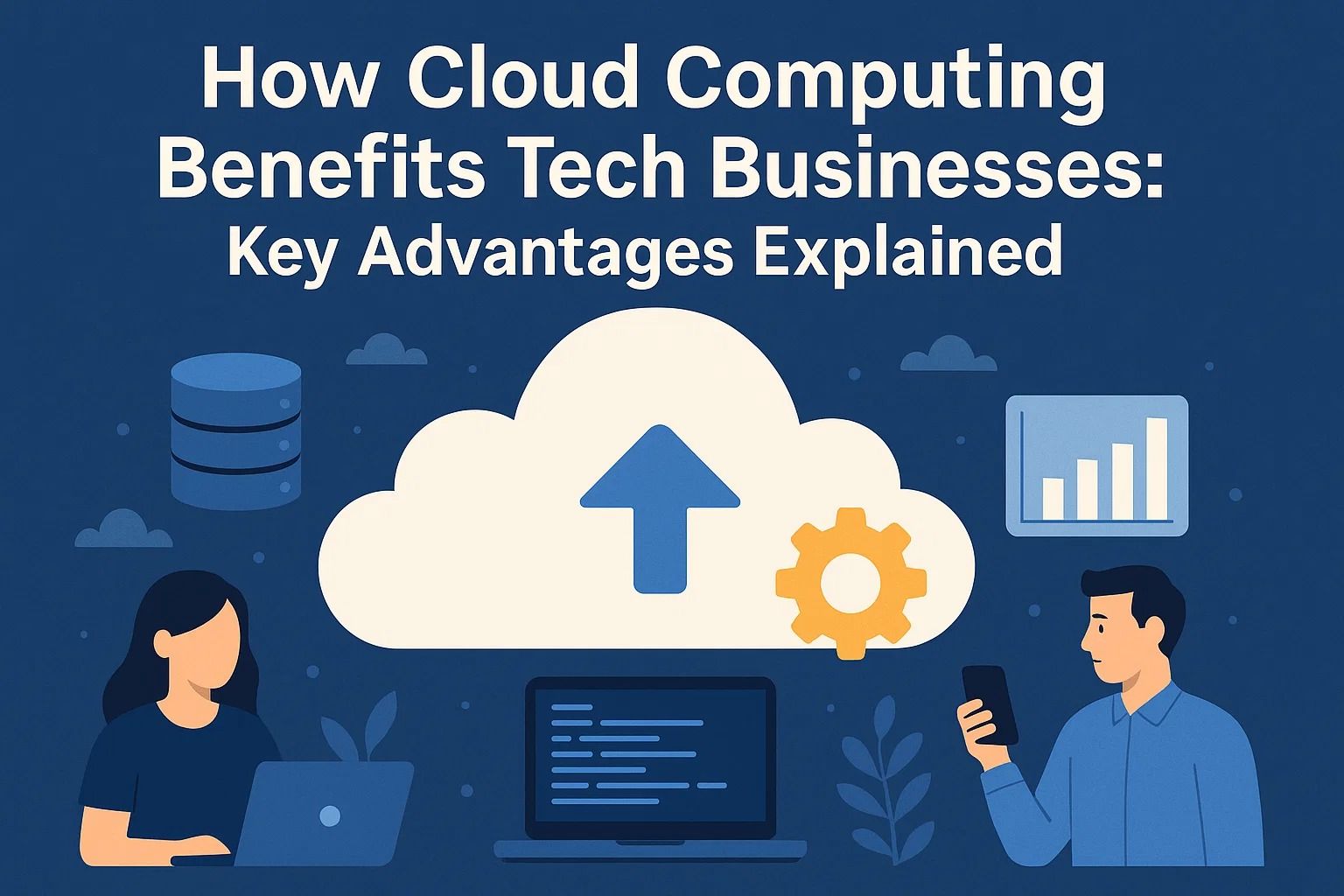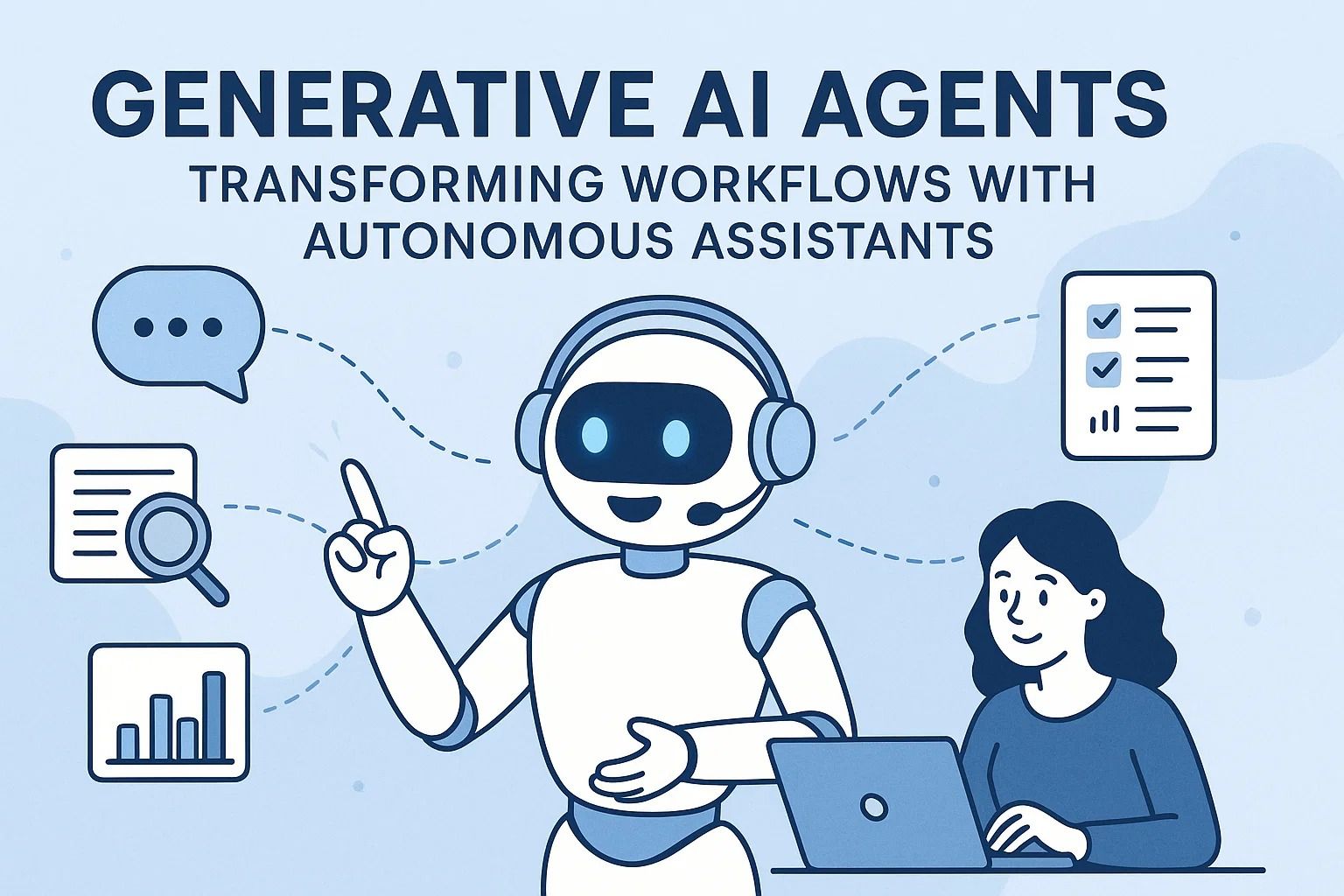
Generative AI Agents: Transforming Workflows with Autonomous Assistant
What Are Generative AI Agents and Why Everyone Talks About Them
In 2025, the tech industry is buzzing around one major term — Generative AI Agents. These are not the usual chatbots we’ve seen over the past years. They are autonomous digital assistants that can plan, make decisions, and perform multi-step tasks without constant human control. In simple terms, they act more like digital coworkers than tools. And this shift is quickly redefining how modern businesses operate.
Unlike traditional AI models that just respond to a single prompt, AI agents combine large language models (LLMs) with memory, task planning, and integrations to external systems — from APIs and CRMs to internal databases. They can remember context between actions, evaluate results, and choose the next step themselves. That’s the key difference between “talking to ChatGPT” and “asking an AI agent to get something done”.
The biggest players like OpenAI, Anthropic, and Google DeepMind are racing to develop more reliable and autonomous agent frameworks that can act as business assistants or even independent services.
How Generative AI Agents Actually Work
Every AI agent works through a loop often described as “think → act → observe → learn”. It starts with a goal (for example: “analyze website traffic and summarize the top channels”). The agent breaks it down into steps, uses different tools — APIs, browsers, data parsers — to gather information, and then generates a conclusion. It then checks the result, refines it, and stores useful data into its memory for future tasks.
Developers usually build agents using frameworks like LangChain, LlamaIndex, or custom orchestration layers over APIs such as OpenAI’s Assistants API. These frameworks help define how the agent thinks, what tools it can access, and how it interacts with external systems. Businesses then customize these agents for different roles — from handling support tickets to monitoring code or automating sales reports.
Why Businesses Care About AI Agents
Corporations are not just exploring these tools out of curiosity — they’re adopting them to solve specific, expensive problems. AI agents are already being used to:
- Automate repetitive operational workflows
- Provide 24/7 customer communication with adaptive responses
- Analyze massive data streams faster than human analysts
- Support decision-making in logistics, finance, and security
- Assist developers by generating and debugging code autonomously
For instance, Shopify’s Sidekick can now automatically manage product listings and suggest improvements to online stores. GitHub Copilot Workspace doesn’t just suggest code — it can plan small coding projects based on a short brief. Even Notion AI and ClickUp Brain now include agents that automate recurring tasks like drafting emails, updating databases, or summarizing meetings.
The Shift from “Assistants” to “Autonomous Systems”
Initially, AI tools were reactive — they waited for your command. Now, agents are becoming proactive. They can remind you about tasks, check deadlines, or trigger workflows based on conditions. In enterprise systems, that means an agent can notice a delayed shipment and automatically alert the logistics team with proposed solutions. This is what makes the “agentic” model so disruptive — it extends automation beyond rigid scripts into dynamic, self-directed decision-making.
Risks and Ethical Questions
But this transformation also brings serious risks. Agents that make decisions independently must be monitored, auditable, and aligned with business policies. A wrong API call or misinterpreted instruction can lead to financial or reputational damage. There are already cases where prototype agents caused accidental system changes or shared confidential data.
That’s why most companies now deploy “sandboxed” agents — limited environments where actions can be simulated before execution. Developers also implement “human-in-the-loop” review systems, where the agent proposes actions, but a person approves them. These safeguards are essential as generative AI systems grow more capable and more unpredictable.
It’s also critical to consider the ethical side — who is responsible if an autonomous system makes a bad call? Should we treat agents as digital employees or complex software? These discussions are already active in AI governance and legal frameworks around the world.
For a related look at how automation shapes the modern workplace, read our detailed piece on Understanding AI Agents and Their Role in Modern Workflows .
In the next section, we’ll explore how developers are actually building agentic systems, what frameworks dominate the landscape, and how startups use this technology to scale their operations faster than ever.
Inside the Architecture of Modern AI Agents
To understand how generative AI agents are built, you have to look under the hood. Despite their “human-like” behavior, they are essentially structured systems — a combination of a large language model (LLM), a reasoning layer, a memory store, and a set of external tools. Together, these elements allow the agent to operate as a self-managed process that can plan, act, and learn iteratively.
At the core sits an LLM such as GPT-4, Claude, or Gemini, responsible for understanding instructions and generating structured reasoning steps. On top of that, the agent framework introduces components like:
- Planner: breaks down a high-level goal into smaller actions.
- Executor: carries out these actions using APIs or integrated tools.
- Memory: stores previous steps, outcomes, and contextual information.
- Critic or Evaluator: reviews whether the result matches the goal.
- Reflection loop: lets the agent learn from its past performance.
This architecture allows the system to behave more like a person solving a problem rather than a machine answering a query. It can analyze, pause, re-evaluate, and try again — something that’s impossible with static, prompt-based AI interactions.
Frameworks That Power the Agent Revolution
There’s a growing ecosystem of open-source and enterprise frameworks that help developers deploy agents faster. Some of the most popular include:
- LangChain – Provides modular chains of reasoning, allowing developers to define how tasks flow from one step to another.
- LlamaIndex – Specializes in connecting LLMs to private data sources, like documentation or CRM databases.
- AutoGPT and BabyAGI – Early open-source projects that showed how agents could work independently by setting sub-goals and iterating until completion.
- OpenAI Assistants API – A production-grade solution that allows developers to host personalized agents with memory and tools built into the API.
These frameworks are the foundation for a new wave of startups building domain-specific agents. For example, a fintech startup might deploy an agent that monitors real-time transactions for anomalies, while a marketing firm builds one that generates campaign briefs and performance reports daily.
The Rise of Multi-Agent Collaboration
One of the most fascinating developments is the concept of multi-agent systems, where several AI agents collaborate — each specializing in a particular domain. Think of it as a digital team: one agent researches data, another writes reports, and a third checks accuracy. They communicate with each other through structured messages, often coordinated by an orchestrator that ensures alignment with the overall goal.
Companies like Hugging Face and Meta AI are actively experimenting with these setups, proving that agents can cooperate to handle complex workflows like software development or financial modeling without direct human supervision.
Real-World Use Cases Across Industries
The beauty of AI agents lies in their flexibility. They can be customized for nearly any workflow where structured decisions and repetitive analysis are required. Let’s take a closer look at some real use cases shaping different industries:
- Software Development: AI agents in DevOps pipelines can monitor build failures, fix minor code issues, and even open pull requests automatically.
- Customer Support: Agents built on top of helpdesk software like Zendesk or Intercom provide contextual answers and escalate only complex cases to humans.
- Finance: Automated portfolio managers leverage agents to monitor markets and rebalance assets according to client risk profiles.
- Healthcare: Agents help medical professionals analyze imaging data, summarize patient histories, or generate draft reports.
- Education: Intelligent tutors adapt to students’ learning pace and design personalized study plans on the fly.
Some organizations even experiment with “company-level” agents — digital entities that act as decision advisors to management teams. These systems can process months of internal data in minutes, surfacing insights about inefficiencies, potential cost savings, or new opportunities.
The Business Value of Autonomy
At its core, the promise of AI agents is scalability without hiring. Businesses can delegate analytical, operational, and creative tasks to these systems, reducing both costs and human error. A single well-trained agent can handle hundreds of micro-tasks daily — from generating reports to verifying transactions — freeing human workers for strategic thinking.
This level of autonomy introduces a new business model: “AI labor.” Instead of hiring a team of data analysts or assistants, a company could deploy a fleet of agents to perform the same workload. The difference is, they don’t sleep, forget, or need onboarding. They just need good data and clear parameters.
Yet, it’s important to highlight that agents are not replacements for human creativity or judgment. They excel in structured, data-driven processes but still depend on humans to define goals, provide ethical oversight, and interpret nuanced outcomes. The best results come from hybrid teams — people and agents working in tandem.
According to a McKinsey report, companies that integrate autonomous AI systems in workflows could see productivity gains of up to 40% by 2026.
Challenges in Deployment and Scalability
While the potential is huge, deploying agents at scale is still difficult. Reliability remains a major concern. Even advanced LLMs sometimes produce inconsistent or illogical actions. Memory management is another pain point — agents must remember relevant context without becoming “confused” by previous interactions. There’s also the issue of data privacy when agents access sensitive company systems.
To tackle this, new generations of frameworks introduce vector databases for memory (like Pinecone or Weaviate) and secure tool-use policies that restrict what agents can access. Companies also run agents inside isolated containers or virtual machines, ensuring any erroneous action stays within a sandboxed environment.
For a deeper exploration of how automation integrates into corporate operations, read The Role of AI in Transforming Tech Businesses in the Digital Era .
Next, we’ll dive into the strategic implications — how the rise of generative agents will reshape the structure of organizations, alter employment trends, and challenge existing business models in the coming years.
The Future of Work in the Age of AI Agents
As generative AI agents continue to mature, their influence on business structures and the workforce is becoming undeniable. They’re not just tools anymore — they’re reshaping the way organizations think about productivity, hierarchy, and decision-making. Instead of a linear workflow where humans delegate to software, we’re entering a circular model where humans and agents constantly exchange feedback, co-create solutions, and learn from each other.
Companies that embrace this partnership model will likely dominate the next decade. They won’t replace employees; they’ll enhance them. Just like the Industrial Revolution introduced machinery that multiplied human labor, AI agents represent cognitive machines that multiply intellectual capacity. The result is faster problem-solving, leaner operations, and a more creative workforce.
From Static Roles to Dynamic Collaboration
In a traditional office, employees often operate in silos — marketing teams do marketing, analysts crunch numbers, and developers write code. AI agents blur those boundaries. A content strategist could use an agent to analyze SEO data, draft campaign outlines, and even coordinate publication schedules across multiple platforms, all from one interface.
Similarly, software engineers no longer have to jump between dashboards or write repetitive scripts. An embedded DevOps agent can monitor system health, apply patches, and suggest optimizations based on performance data. In essence, every employee gains a digital colleague — one that never tires or complains, and that scales instantly with workload.
Ethical Oversight and Trust
Despite the promise of AI autonomy, trust remains a fragile component. Businesses must establish frameworks to ensure accountability and transparency in agent-driven decisions. Just as human employees have job descriptions and performance reviews, agents need similar governance structures. Logs, audit trails, and explainable reasoning models are essential to prevent misuse or bias.
Regulators are starting to take notice. The European Union’s AI Act, for example, mandates transparency and risk assessment for automated systems that can affect human decisions. In the U.S., agencies like the FTC and NIST are drafting guidelines for responsible deployment of autonomous systems.
AI Agents as a New Layer of Infrastructure
As adoption spreads, AI agents will likely evolve into an invisible layer of digital infrastructure, much like the internet or cloud computing did in previous decades. Every business tool — CRM, ERP, CMS, or analytics dashboard — will have its own embedded agent, capable of interacting with others through standardized protocols. These agents will form what some researchers call a “digital organism” — a connected, self-optimizing ecosystem of autonomous functions.
Imagine a retail chain where agents handle inventory logistics, marketing strategies, and financial forecasting while staying in constant communication. When sales dip in one region, the marketing agent instantly coordinates a campaign with the logistics agent to adjust supply. The system self-regulates, predicting and reacting in real time without human bottlenecks.
Such architectures are already being explored by companies like IBM, Nvidia, and Anthropic. Cloud providers are beginning to bundle “agent frameworks” directly into enterprise products. This integration will blur the line between software and workforce — your IT system will no longer just process data; it will think, plan, and collaborate.
Economic and Social Implications
Of course, as with any major technological leap, the rise of AI agents will have ripple effects across labor markets. Routine office work — especially roles centered around coordination, documentation, or data reporting — may decline in demand. However, entirely new categories of jobs will emerge, such as AI workflow architects, prompt engineers, and agent supervisors.
In a sense, every professional will need to learn how to “manage” digital workers. Understanding how to instruct, monitor, and collaborate with agents will become as essential as knowing how to use email or spreadsheets. Those who adapt early will hold a significant advantage in efficiency and creative output.
Interestingly, the democratization of agents may also empower freelancers and small businesses. With access to affordable AI infrastructure, solo entrepreneurs can run complex operations that once required entire teams. The barriers to entry for starting a tech-driven company are rapidly collapsing.
For those exploring digital independence, see our guide on tools that boost productivity and workflow efficiency.
Looking Ahead: The Path to Responsible Autonomy
Looking into the next few years, the key challenge won’t be capability — it will be control. As agents become more adaptive, businesses must design guardrails that balance autonomy with accountability. Open-source communities are already working on “alignment layers” — frameworks ensuring that agents’ goals always stay tethered to human-defined values and business ethics.
We might even see the emergence of a new professional role: the AI ethicist embedded within organizations, responsible for auditing and aligning agents’ behavior. As these systems gain more decision power, ensuring transparency will be the new cornerstone of trust in technology.
In the end, AI agents won’t replace human intelligence — they’ll amplify it. Those who learn to integrate them responsibly will gain unprecedented leverage in innovation and productivity. The rest risk being left behind in a new era where machines don’t just assist — they collaborate.
The rise of AI agents marks a paradigm shift: automation is no longer about replacing people — it’s about extending human capability through continuous, intelligent partnership.
The companies that thrive in this landscape will be those that see AI not as a product, but as a colleague — one that’s tireless, data-driven, and endlessly scalable. The true winners will be the ones who master the art of collaboration between human creativity and machine autonomy.











